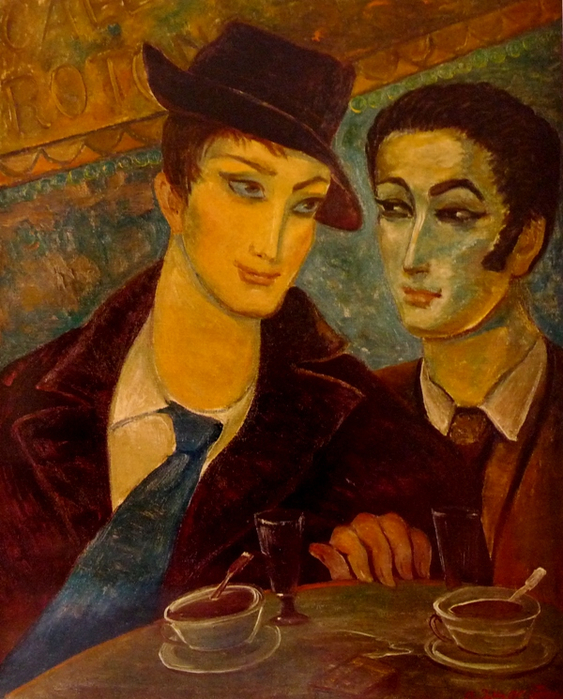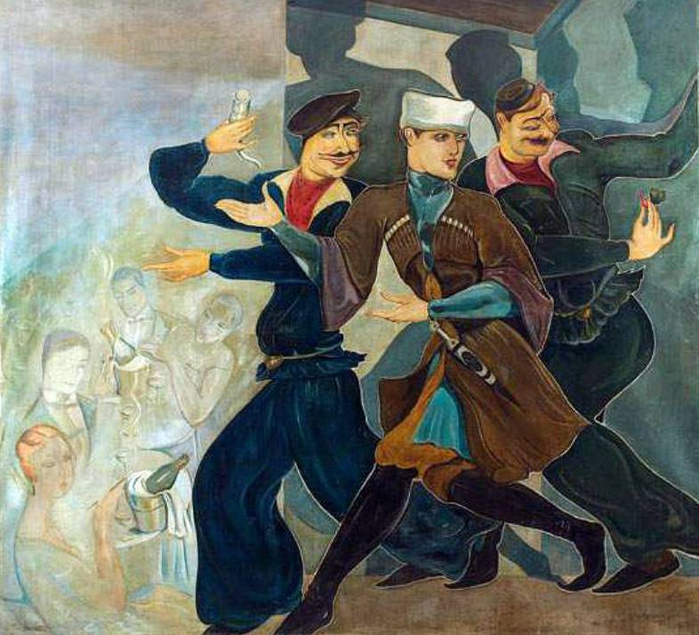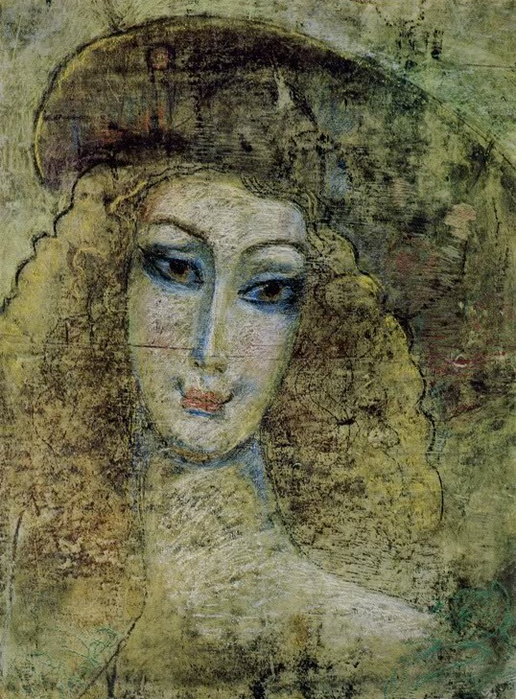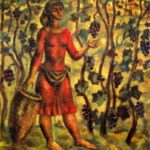Soviet Georgian artist Lado Gudiashvili 1896-1980

Amedeo Modigliani in the cafe Rotonda. Painting by Soviet Georgian artist Lado Gudiashvili (18 March 1896 – 20 July 1980)
Soviet Georgian artist Lado Gudiashvili
– A lot of sun … Since the morning he’s running away from it. The sun prevents the artist. Exaggerating colors, deceives the eye. But all his art is full of the sun, and he can not do without the sun.
Lado Gudiashvili, People’s Artist of the USSR, laureate of the Rustaveli Prize has lived long life with convenient, well-established concepts. Even with his youthful appearance, slender, with vivacious eyes and greed for work, this eighty-year-old man claimed the favorite idea that wisdom is the ability and in his old age to maintain the immediacy of the perception of the world.
Meanwhile, back in the 1920s, he appeared in Paris, this “mecca” of the artistic world, this capricious sea, which absorbed more than one talent. The young artist stayed true to himself even after the meeting with the eminent maestros. And after the noisy coronation and the abundance of artistic trends, the bohemian life of creative youth, who brought their claims to Paris and bury them there.

Vladimir Mayakovsky in the cafe Rotonda, 1975. Soviet Georgian artist Lado Gudiashvili (18 March 1896 – 20 July 1980)
In the catalog published to the Paris exhibition of Lado Gudiashvili, you can read the parting words of the poet Andre Salmon – a friend of Picasso. “Aspiring first of all to become an artist and not afraid of labor to do this after Delacroix, after Courbet, after Cézanne, Lado Gudiashvili is given the desire to be a poet, following the secret of his nature and national spirit… And we will love it in him”
Prophetic lines. Today, having entered the history of modern fine art, Gudiashvili attracts us with the discoveries of the colorist, the expressiveness of the draftsman. Also, with the peculiarity of the decisions and the unexpectedness of the choice of the topic. It is this same “mystery”, poeticized, attested to the world in the hidden national language, enchants us, awakens the acute feeling inherent in the discoverers of the new worlds.
The Paris period in the work of Gudiashvili is also significant. The inherent, observant, insensitive, thoroughness of the artist allowed to draw a decisive conclusion for all the further experience: only fidelity to native soil stands here. The result – a personal exhibition, which had ironic and spoiled Parisian connoisseurs success and received an unambiguous response. “More often than artists, when they come to Paris, they lose their face. Lado Gudiashvili happily avoided this,” wrote art critic Maurice Reinal.
What about the work of that time, which traveled after Paris to the salons of Rome, London, Brussels, Amsterdam, and New York. Social subjects with frankly publicistic predetermination: simple people, everyday dramas, and class tragedies.
Quietly tracing in retrospect the complex formation of what today represents the work of Gudiashvili for Georgian culture, for Soviet fine arts, we clearly see the origins. They lead to the treasury of Georgian fresco painting, and to the traditions of graphic miniatures. Even the most intricate of his subjects – legends, fantasies on canvas – to be precise, gave birth to a whimsical imagination, and folklore. The adolescent passion for archeology, to the old days, the study of the monuments of ancient Georgia filled the insatiable album with the faces of the frescoes, the reflection of which is visible in all the female portraits of Gudiashvili.
He passed his training side by side with the pioneers of Georgian Soviet art, who gradually and not easily gained individuality. At first, giving his experience to the youth at the head of the Department of Monumental and Decorative Arts of the Academy of Arts in Tbilisi, Gudiashvili himself comprehended a new experience.
Noteworthy, he was one of the first to put his signature under the “Declaration of the Revolutionary Artists of Georgia”, which requires the active participation of art in socialist construction. Besides, one of the first in the republic speaks at exhibitions with an industrial theme – “Hero of Industry”, “Plant in Zestvfoni”, and “Locksmiths”. With the sketchbook, the artist visited the construction of the Sampo irrigation system, creating the “New Samgori”. In addition, he was one of the first came to the revolutionary theater and cinema, to book publishing.
Rainbow, full of light are “Fruit collection”, “Grateful toast”, and “Lover of birds”. A recognized master of allegory, Gudiashvili sharpens his satirical pen to sarcasm in the anti-fascist graphic series of 1942.
Indeed, the breadth of his interests is amazing. Modern life and history, folklore, literature and portrait. The portrait suite of Gudiashvili crowns Pirosmani, to the image of whom the artist returned more than once. Reinterpreting nature, trying to get away from specific characteristics to generalizations of a national type and character.
Nobility and chastity happily coexist on his canvases with a unrestrained fantasy. His grace is not afraid of a dangerous facet of discovery, because everything is fastened by the health of thought and the clarity of purpose. The author forces us to accept the rules of the proposed game.
According to the Hero of Socialist Labor Gudiashvili, we have to deal with a misunderstanding on the creative path. However, this does not give us the right to ambition. “Or, before you will soon grow an irresistible wall of alienation. Art has never made great victories by building castles in the sand. Patience, persistence and artistic honesty are the friends of talent. I repeat – honesty, meaning by this ability to abandon transactions with a conscience, to which we sometimes go with ease in an effort to be at all costs original. Banal, it would seem, a recommendation to be yourself. But, if you think about it, it is the most valuable quality of human nature … ”


































